A SHORT WHO'S WHO OF THE ECONOMIC LEAGUE
In the course of its seventy years of operations the Economic League has attracted onto its central and regional councils a remarkable number of powerful and influential men. It has simply not been practical to provide even a modest curriculum vitae for each entry and if you would like to know more about those on the lists I can do no more than refer you to the standard reference sources: "Who's Who", "The Times Index", "Dictionary of Business Biography", "Dictionary of National Biography", professional and business registers, your local history library, and of course, in a number of cases, standard history texts.
The following list takes two historical snapshots of the membership of the Economic League's main governing bodies: in the mid 1920's and at the time of the formation of the Limited Company in 1951. "1925", "1926" or "1927" after a name indicates the first known date of appointment, in some cases it might be earlier. "1951" indicates that the person was a founding member of the Economic League Co Ltd. In between these dates a few names of possible interest have been added. "(MP)" indicates that a person served as a Member of Parliament at some stage of their career, although I am afraid it is possible I have overlooked a few of these.
To these names of, primarily historical, interest I have added the names of Central Council members from over fifteen years or so. The composition of the Central Council over its last five years is given in a separate list.
AIREY, SIR EDWIN Leeds 1926
ALLDAY, H. RUSSELL 1951
ALLEN, H. G. Central Council 1925
ALLEN, JOHN SANDEMAN (MP) Liverpool 1925
ANDREWES, E. D. E. Central Council 1972-1976 res 1977
ANDREWS, ARTHUR Central Council 1925
ANDREWS-JONES, D. Central Council 1984
APPLEBY, Capt WILLIAM Hon Treasurer, North East Coast 1933 1951
ARCHER, A. W. Leeds 1926
ARMSTRONG, Col. O. C.Central Council 1925
ASHWORTH, PETER E. Central Council 1982
ASTBURY, Commander A. W. (MP) Lancashire & Cheshire 1925
BAIN, F.W. Liverpool 1925
BAKER, J. ELLIS Central Council 1925
BALFOUR, SIR ARTHUR (LORD RIVERDALE) Founder, Sheffield executive 1926
BALLANTYNE, H. Liverpool & District Organiser, 1933
BARDSLEY, J. B. Sheffield 1926
BARKER, T. B. Lancashire & Cheshire 1925
BARNES, ARTHUR KENTISH Liverpool 1925
BARNET, WALTER Midlands 1925
BARRAN, Sir DAVID Central Council 1972-79 (resigned). President 1972/3
BATEMAN, Lieut. Col. C. M. Central Council 1925 Keighley 1926
BECKETT, Hon RUPERT Central Council 1925 Leeds (President) 1926
BENSON, E. R. Central Council 1925 Huddersfield (President) 1926
BEST, P. A. London exec ??????
BIDDER, Lieut. Col M. M. Central Council 1925 Leeds 1926 1927
BINNS, J. SPENCER Keighley 1926
BLAND, G. H. Hull executive 1925
BLENKINSOP, A. Sheffield 1926
BOOT, CHARLES Sheffield 1926
BRIDGE, Maj W. J. Central Council 1984
BRITTAIN, Sir HARRY (MP) 1951
BROCKLEHURST, E. S. Hull executive, 1925
BRODIE, Maj. THOMAS Central Council 1984 (Vice president)
BROOKES, Lord Raymond Brookes until 1975 Central Council 1972-77 resigned 1978
BROOKSBANK, W. Huddersfield & District Organiser, 1933.
BROWN, F.E. Huddersfield executive 1926
BROWN, PETER, BOSWELL Sheffield 1926
BUCHANAN, Colonel MAURICE B. 1951
BURRELL, F. H. Hull executive 1925
CAILLARD, VINCENT Central Council 1925
FBI CAMPBELL, The Hon ANGUS DUDLEY 1951
CANBY, Alderman THOMAS Huddersfield executive 1926
CAPRO, A. J. Sheffield 1926
CAREY, W. H. Nottinghamshire Committee 1927
CARLILE Central Council 1972-83 resigned 1984
CARTER, E. G. Central Council North East Area 1971-1978 died
CAYZER, Lord NICHOLAS Central Council 1972
CHADWICK, F. T. Leeds 1926
CHALLEN, Maj J. Lancashire & Cheshire 1927
CHAMBERLAIN Central Council 1976, 1977
CHAPPELL, E. P. Central Council 1977-79, resigned 1980
CHARLESWORTH, R. Sheffield 1926
CHEVERTON-BROWN, Alderman M. Hull 1925
CHILD, ALWYN Leeds 1925
CHORLEY, I. J. South Wales 1925
CHRIMES, WILLIAM BERTRAM Liverpool 1926
CLARK, Lieut. Col. EDWIN KITSON Leeds 1927
CLARK, HENRY North East Coast 1925
CLARK, W. Sheffield 1926
CLARKE, WILLIAM JOSEPH 1951
CLIVE, ROBERT Sheffield 1926
CLOUGH, HENRY S. Keighley President 1926
COATES, WILLIAM HENRY Central Council 1927
COGGAN, CHARLES Nottingham Treasurer 1927
COOKSON, CLIVE North East Coast 1925 1951
CORDINGLEY H. B. Keighley 1926
CORY, Sir CLIFFORD (MP) Central Council 1925, MP
COULL, JAMES Central Council 1987
CRAIG G. Leeds. Hudersfield 1926
CRAWFORD, ARCHIBALD National Director of Policy and Propaganda 1925/1926
CROWTHER, LAWRENCE Huddersfield 1926
DAWES, C. A. W. Central Council 1971-1982 died
DENISON, W. B.Leeds 1926
DENNISS, A. J. London 1925
DETTMER, JOHN STANLEY Central Council 1977-78, Vice President,
Director General
DIXON, EDWARD Sheffield, President. 1926 Central Council 1925
DOBSON, Col B. PAULIN Lancashire & Cheshire 1927
DOBSON, E. London 1925
DOCKER, FRANK DUDLEY Central Council 1925
DORMAN, ARTHUR North East Coast 1926
DOWDING, Lord Central Council 1984
DREW, W. NEWTON Sheffield 1926
DUNLOP, R. J. Central Council 1976-79 resigned 1980
EAGLESOME, Sir JOHN Leeds 1926
EARLE, S. G. T. Midlands 1926
EDWARDS, P. G. Central Council North East 1977 - President?
ELLIOTT Sheffield 1926
ELLIS, G. A. Huddersfield 1926
ELLIS, Sir WILLIAM HENRY Sheffield 1926
ELSE, H. C. Sheffield 1926
ERROLL, Lord Central Council 1977-83, resigned 1984
EVANS, J. ORMUND Midlands 1925
EVETTS, Lieut. Gen. Sir JOHN Central Council 1972-1976
FAHEY, D. Central Council 1983
FAIRER, Maj WALTER C. Lancashire & Cheshire 1927
FILDES, Sir HENRY (MP) Lancashire & Cheshire 1925
FINNEY, VICTOR HAROLD (MP) Area Officer Lancashire & Cheshire 1933
FIRKINS, BERTRAM JAMES 1951
FIRTH, Sir ALGERNON F. Central Council 1925
FIRTH, C. Central Council 1976-84 resigned 1985, died 1985
FLATHER, D. Sheffield 1926
FORD, Alderman H. GLOVER Nottingham General Committee
FORSTER, J. H. B. North East Coast 1925
FORSTER, WILLIAM Nottingham 1927
FORSTER, Maj W. Leeds. Midlands 1925
FOWLER, N. Central Council resigned 1976
FRASER, J. D. Central Council 1972-1974 resigned 1975
FREMANTLE, R. Central Council 1983
FRITH, HENRY Keighley 1927
GAINFORD, LORD President Central Council 1925, 1926 BBC, Mineowner, FBI etc
GAINSFORD, Maj A. J. Sheffield 1926
GARDNER, D. Central Council 1972-77
GEDDES, Sir AUKLAND C. Chairman 1925-26
GEE, PHILIP Central Council 1925
GIBB, MAURICE S. North East Coast 1925
GIBSON, FINALY A. Central Council 1925 South Wales 1925
GLADSTONE, ROBERT Liverpool 1925
GLYNN, J. P. R. Central Council 1973-78 resigned 1979
GOSLING, W. Hull 1925
GOULD P. Leeds. South Wales 1925,1926
GOULD J. C. Central Council 1925 James Childs? (MP)
GOW, MAXWELL HARPER Central Council 1984
GOWAN A. B. North East Coast 1925
GRAHAM, Sir WILLIAM South Wales 1925
GRAY, H. A. BENNIE Huddersfield 1926
GREENAWAY, P. D. C. Central Council 1983
GRESHAM, JOHN HORSLEY 1951
GRIEVE,,T.aR.rCentral Council11974-79
GRIMTHORPE, Lord Central Council 1972-8
GROVES, Col. JOHN EDWARD GRIMBLE Lancashire & Cheshire 1925
GWYNNE, NEVILE GWYN Central Council 1925
HADDON-GRANT, M. Central Council 1980-1983, 1984
HADFIELD, Sir ROBERT A. Central Council 1925
HALE, GRAHAM Central Council 1987
HAMILTON, C. A. C. Central Council 1976-1979 resigned 1980
HAMPTON, A. B. Central Council 1976, 1977- ?
HANN, EDMUND LAWRENCE South Wales 1925
HARDIE, H. D. S. Central Council 1980-1983, 1984
HARDING Central Council 1986
HARDISTY, A. H. Huddersfield 1926
HARPER, R. South Wales 1925
HARRISON, JOSEPH Lancashire & Cheshire 1925, 1926
HARTLEY, A. D. Keighley 1926
HEARD, ARTHUR W.South Wales 1925
HENDERSON-TATE, R. Chair, North Midlands 1965-71 Central Council 1965-71, died 1972
HENRY, Sir JOHN Central Council 1925
HEWLETT, Lord NW Region 1976-79 Central Council 1978/79
HEY, Col W. L. Central Council 1972-75
HICKINGBOTHAM Midlands 1925
HIDE, W. S. Vice Pres Hull 1925
HILL, E. J. London 1925
HIND, J. W. Nottingham
HINDE, W. E. South Wales 1925
HIRST, GEOFFREY A. N. (MP) Central Council 1934 to 1967
HITCH, W. P. Leeds 1927
HOARE, Col R. R. Joined early 1930's as regional director Lancs and Cheshire, DG 1945-1959 Central Council 1959-75
HOBHOUSE, Sir JOHN RICHARD 1951
HODGKIN, C. E. London 1925, 1926
HOLDEN-BROWN, Sir DERRICK Central Council 1975-82,
HOLLINGWORTH, H. Hudders 1926
HOPE, H. A. L. Central Council 1973-1976
HOULT, E. Sheffield 1926
HOWARTH, WILLIAM Bolton
HUDSON, Col CHARLES Hull 1925
HUDSON, R. Keighley 1926
HUGHES, Dr J. E. Central Council 1977
HULTON, Sir EDWARD Central Council 1925
HUNTER, E. C. C. Lancashire & Cheshire 1925
HUNTING, LINDSAY CLIVE Central Council 1975-1977
HURST, A. E. Midlands 1925
HURST, C. F. Central Council 1972-1977
HUTCHISON, Colonel JAMES R. H. (MP) 1951
IBBERSON, WILLIAM G. Central Council 1972-1977
IMPEY, FRANK Midlands
INVERNAIRN, Lord Central CouncilI1925e (MP) until 1933) 1951
JACKSON, C. F. Midlands 1926
JAKEMAN, H. F. 1986
JENKINS, EDGAR J. Sheffield 1926
JOEL, HENRY F. London 1925
JOHNSON, J. A. Leeds 1927
JONES, J. A. Leeds 1927
JONES, TREVOR S.South Wales 1925
JONES, Sir WALTER BENYON 1951
KELLY, R. C. Central Council 1925
KEYS, D. Central Council 1980-84
KILNER, ERNEST R. 1951
KING, NEWMAN Keighley 1926
KING, THOMAS London 1926
KITSON, H. H. Leeds 1927
KITSON, LIONEL Central Council 1927
LAMBERT, E. C. Vice Pres Hull 1925
LAWRENCE, A. LYNDEN London 1925
LEAN, G. ALISTAIR Central Council 1982
LEATHER, HARRY DOUGLAS 1951
LEDBURY, R. E. Midlands 1925, 1926
LEE, Lieut Col A. N. Sheffield 1926
LEE, A. S. Sheffield 1926
LEE, W(ILLIAM) A(LEXANDER) Central Council 1925, 1951
LEIGH, PERCIVAL Leeds 1927
LEWIS, HUGH Liverpool 1926
LILLIE, C. W. Leeds 1927
LINEHAM, S. Leeds 1927
LINTON, C. E. Sheffield 1926
LITTLE, DAVID Leeds 1926
LLOYD, M. C.Central Council 1972
LONGBOTTOM, Sir Benjamin Lancashire & Cheshire 1925
LOW, A. P. Central Council 1972
MABBOTT, H. E. D. Central Council 1927, Chair in late 30's Lancashire & Cheshire 1925
MACASKIE, T. S. Leeds 1927
MacDONAL, A. R. Secretary of West of Scotland (?)
MACHIN, Sir STANLEY London 1925
MacKAY, J. Sheffield
MacKENZIE, Dr A. Central Council 1927 Leeds 1926
MACLEAN, Sir ROBERT Central Council 1973-1983, Vice President 1977-83
MACLEOD, D. Central Council 1974-1983
MacPHERSON, Maj W. W. Leeds 1927
MALCOLM, Sir MICHAEL Central Council 1952-75 (died) Scotland, Later Central Council
MANDER, Capt. H. VIVIAN Midland Counties 1926
MANNION Maj F. O. Organiser Nottingham 1933
MANVILLE, Sir EDWARD Central Council 1925 FBI etc
MARJORIBANKS, D. S. North East Coast 1925
MARSHAL-ANDREW, DUCAN P. Central Council 1982
MARTIN, D. S. Central Council 1976-1978
MATTHEWS, VICTOR C. Central Council 1975-80 Enobled 1980(1981?)
MATTHEY, HAY INGHAM Central Council 1972-1981, President 1980
MAXWELL Brig Gen A. TREASURER 1925
MAY, JAMES Leeds 1927
McCASKIE, N. Huddersfield 1926
McGOWAN, Sir HARRY (Later Lord) Central Council 1925
McCRAITH, Sir DOUGLAS Nottingham 1927
McMURTRIE, R. P. L. Central Council 1977-1980
MEWTON, W. H. South Wales 1925
MILES, JAMES Central Council 1925 South Wales 1925
MILLS, JOHN L. Central Council (Co-opted) 1983, Central Council 1984
MINNS, ANTHONY E. Central Council 1952-74 (died) member of the EL Executive FinanceCommittee (est. 1956), later called the Policy-Finance Committee.
MOIR, N. R. M. Central Council 1972-73
MONGOMERRY, Maj Gen Sir R. A. Kerr North East Coast 1925
MORGAN, Sir HERBERT Central Council 1925
MOULD, A. N. Central Council 1972-1975
MOWAT, M. J. Sheffield 1926
MULLER, P. MAXWELL London 1925
MURRAY, Sir ALAISTER Central Council 1958-1973 (died) Chair Scotland 1958-1969, Pres Scotland 1969-1973
MUSPRATT, SIR MAX Central Council 1925 Chair Liverpool 1925
NALL, SIR MICHAEL Central Council 1983-
NEAL, Sir LEONARD Central Council 1977-1980
NELSON, G(EORGE) H(ORATIO) Sheffield 1926
NEWSHOLME, N. R. Keighley 1926
NICHOLSON, FRANK North East Coast 1925
NICHOLSON, J. L. London 1925
NICHOLSON, S. T. Hull 1925
NIMMO, Sir ADAM Central Council 1925
NOBLE, Sir SAXTON WILLIAM Central Council 1925
OLDHAM, Sir ERNEST FITZJOHN London 1925, 1926
OLIPHANT, M. D. Central Council 1972-1973
ORCHARD, LAWRENCE W. Central Council 1975-77
ORMEROYD, JOHN Lancashire & Cheshire 1925
OSBORN, S. Sheffield 1926
PALMER, W. Leeds + District Organiser 1933
PARKES, J. J. Central Council 1972-76
PARSONS, JIMSON Central Council 1975-
PEARCE, H. Lancashire & Cheshire 1925
PEARSON, PETER L. H. Central Council 1985
PEASE, REGINALD North East Coast 1925
PEPPER, SYDNEY L. Midland Counties Counties Organiser 1933
PORTWAY, J. H. Leeds 1927
PRAIN, J. MURRAY Central Council 1972-74
PRENTICE, G. Liverpool 1926
PRICE, N. G. Central Council 1977-79
PRIESTMAN, FRANCIS North East Coast 1925
PRITCHARD, F. E. Liverpool 1925
PUTNAM, Sir THOMAS North East Coast 1925
RAWORTH, R. B. Central Council 1974-83
REA, EDWARD Central Council 1985- President South Wales
REDDISH, HALFORD WALTER LUPTON 1951, Central Council 19??-1976, Vice President, Died 1977
REED, EDWARD 1951
REE, Dr ALFRED Lancashire & Cheshire 1925
REES, D. MORGAN South Wales 1925
REYNOLDS, Sir JAMES P. Central Council 1926 Liverpool 1925
REYNOLDS, R. C. Lancashire & Cheshire 1927
RHODES, D. Keighley 1926
RHODES, R. E. Hull 1925
RIMMER, Lieut. Col. EDWARD Liverpool 1925
RITSON, Lieut. Col. W. H. North East Coast 1925
ROBERTSON, Dr A. Central Council (co-opted) 1983, Central Council 1984-
ROBINSON, G. FOX Central Council 1925 Hull 1925
ROBINSON, THOM Central Council 1987-1989
ROBSON, Maj P. Hull 1925
ROCHDALE, The Rt Hon Lord (George Kemp until 1913) 1951, Central Council ?-1977, Vice President
ROGER, R. North East Coast 1925
ROGERS, Sir HALLEWELL Central Council 1925
ROGERS, T. G. PARRY Central Council 1982
ROPNER, Col. LEONARD (MP) North East Coast (Tees/Hartlepool) 1925
ROSE, Group Capt A. D. Central Council 1972-1974
ROSS, MORTON Central Council 1980-1983
ROSS, P. Hull 1925
ROWLES, RONALD R. Central Council 1983
RUDOLF, J. P. Liverpool 1926
RUNCIMAN, The Rt Hon The Viscount (Walter Runciman until 1937) 1951, Central Council ?-1977,(Vice President until 1937)
RUNDGE, C. D. Central Council 1986
RUSHTON, Sir ARNOLD Liverpool 1925
RUSHWORTH, A. E. Huddersfield 1926
RUST, H. L. Sheffield 1926
SADLER, STANLEY North East Coast 1925
SANDERS, A. W. Midland Counties
SANDERSON, Col OSWALD Vice pres. Hull 1925, 1926
SANDFORD, LEONARD R. London & District organiser & General
Secretary 1933 Joint Orgn (With J. B. White) of South of England
SARGEANT, W. H. Secretary of Sheffield & District 1933
SAVILL, PETER Director General -1985, Central Council 1986 -
SENIOR, A. Sheffield 1926
SHERMAN, FRANK Central Council 1925 Chair of South Wales 1925
SIMPSON, J. F. Central Council 1972-1983
SKELTON, W. S. Sheffield 1926
SMITH, CLARENCE, D. North East Coast 1925
SMITH, LAUNCELOT E(USTACE) Central Council 1925 Chair North East Coast 1925
SMITHERS, Sir WALDRON (MP) 1951
SOUTHERN, FRANK Lancashire & Cheshire 1925
SPEIR, Sir RUPERT Central Council 1972-1976
SPENS, Colonel HUGH BAIRD 1951
SPICER, DOUGLAS London 1925
STACEY, Capt. Liverpool 1925
STANYARD, ALFRED J. 1951
STEVENS,OLtPColonelLT.SHARRY1G. 1951
STOCKWELL Leeds 1926
STUART, LORD COLUMN CHRICHON (MP) South Wales 1925
SUMMERS, HUNTER North East Coast 1925
SWAN, E. Liverpool 1925
SYKES, Lieut. Col. Sir ALAN J. (MP) Central Council 1925
Lancashire & Cheshire 1925(president)
SYKES, CHARLES D. Midland Counties 1925
TATE, H. SAXON Central Council 1973-83, Chairman (?) 76-82
TERRY, Alderman CHARLES 1951
THOMPSON, Capt. J. D. Lancashire & Cheshire 1925
THOMPSTONE, W. G. Central Council 1973-1975
THORLEY, Sir GERALD Central Council 1973-198?, 1980-? President
TILLING, R. M. London 1925
TOOSEY, Sir PHILIP J. Central Council 1960-1976 (died).
Liverpool& District
TOUCHE, Sir ANTHONY G. Central Council 1975-?
TURNER, ERIC Central Council 1965-1980 (died), Chair Policy & Finance Committee 1967-1972, Chair of Investment Sub-committee formed in 1977
UNDERWOOD, Alderman EDUMUND G. Nottingham 1927 1951
UNWIN, M. E. Sheffield 1926
VINE, NORMAN D. Leeds 1927
VINES, ADOLPH London 1925 1951
VINES, M. Central Council 1972-1975
VOGEL, JULIUS, L. F. Liverpool 1925
VYLE, GILBERT C. Central Council 1925 Chair Midland Counties 1925
WAGSTAFFE, F. F. Keighley 1926
WARHAM, RIDLEY North East Coast 1925
WARNER, J. B. Nottingham 1927
WEBBER, ROBERT J. South Wales 1925
WEDGEWOOD, A. Lancashire & Cheshire 1925
WEST, Sir HAROLD 1951
WHITEHOUSE, B. J. Central Council 1985-
WHITEHOUSE, W. H. London 1925
WHITFIELD, F. Huddersfield 1926
WILKINS, R. H. Central Council 1972-78, Vice Pres 1975?
WILLAN, ROBERT M. Central Council 1982-??, North West
WILLANS, G. C. H.Huddersfield 1926
WILLEY, Lieut. Col the hon FRANCIS VERNON (MP) (Baron Barnby from 1929) Central Council 1925
WILLIAMS, LLEWELLYN Lancashire & Cheshire 1927
WILLIAMS, D. R. H. Huddersfield 1926
WILLIAMSON Col R. S. Midland counties 1926
WILSON, E. London 1925, 1926 1927(chair)
WOOD, Sir ARTHUR N. L. North East Coast 1925
WOODHOUSE, Sir PERCY Lancashire & Cheshire 1927
WRATHALL, J. Keighley 1927
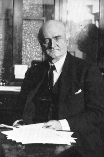
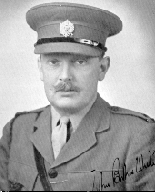
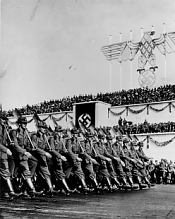
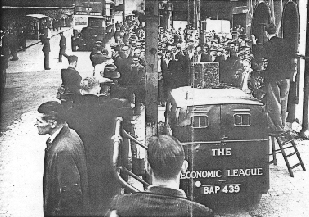
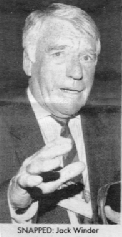
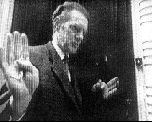

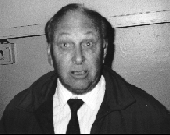
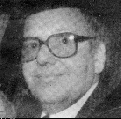
Comments
Just discovered that Mike
Just discovered that Mike Hughes, author of this book, has a site with stuff on the Economic League, blacklisting, the spycops inquiry and related subjects: https://www.spiesatwork.org.uk/